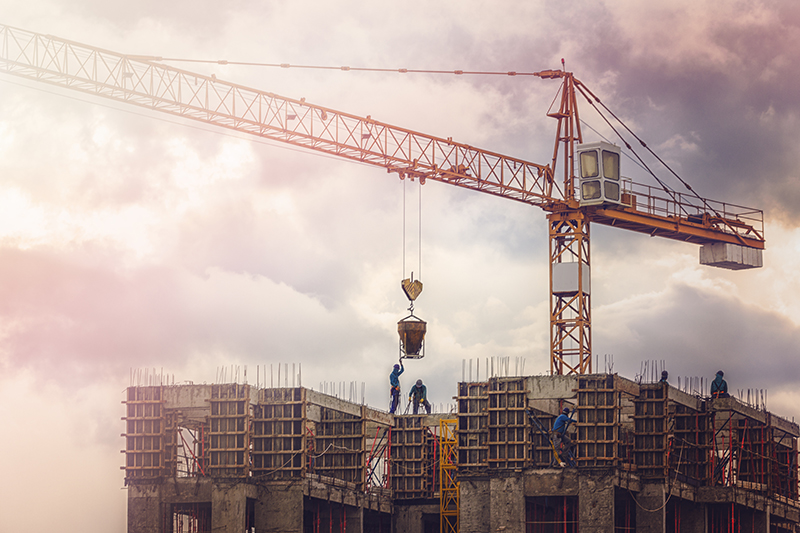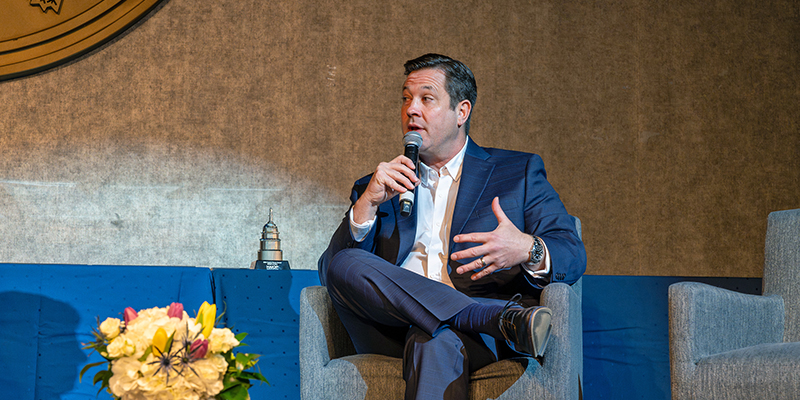What changes will 2018 bring for the ever-evolving construction industry? If current trends are any indication, the new year holds the promise of continued growth, but 2018 should also bring the industry to its inflection point. The convergence of the deepening labor struggle, macroeconomic change and productivity-boosting technology stands to drive strategic changes — and new ways of tackling old problems. If you are interested in learning a bit more about current trends, then you could check out these commercial construction trends here.
The commercial real estate construction sector is in the mature stages of economic expansion, according to JLL’s new U.S. Construction Outlook report, with 2017 spending up 1.9 percent over 2016 levels. While growth should continue for the next 12-18 months, assuming the economy stays its current course, margins are beginning to slide as construction operators grapple with fewer hands on deck than ever.
Fortunately, experts can tap the benefits of new technology and stay ahead of fluctuating demand by paying close attention to the following mega-trends:
1) Construction unemployment bottoms out as wages continue to soar
In 2017, the construction unemployment rate sank to a historic low of 4.5 percent, down from 5.7 percent in 2016. With minimal growth in the workforce on the horizon, there’s no sign of a break in 2018. Accessibility to specialized training in things such as confined spaces and gas test atmospheres, similar to the training offered at www.whsmoreskills.com.au has made workers much more reliable and as a result even more in demand.
Overall low unemployment in the U.S. has created an all-but-empty talent pipeline for construction firms, pushing up wages. In the year ahead, wages may increase even faster than they have in the past, continuing to accelerate from the 3.4 percent jump in average hourly wage between 2016 and 2017.
The takeaway? Construction costs will continue to go up as a direct result of personnel decisions, making a case for more creative human resources strategies. Some large contractors, for example, are finding it can make more sense to hold laborers on the payroll even if they aren’t currently needed. Holding skilled workers now could help keep them from turning to another job before the next project arises. Other contractors are working around the talent shortage by supporting training programs and recruiting outside their geographical area. Such tactics may not yet be widespread, but they do point to the need for more creative responses to the skilled worker shortage that’s likely to become even more prevalent in coming years.
2) Productivity aids will be a bright spot for the industry
The continuing labor shortage has highlighted the need to improve productivity. Construction has been relatively slow to scale up productivity efforts compared with the manufacturing sector, where productivity has shot up tenfold over the last few decades. That’s changing now as new advances in industry-specific technology can go a long way in improving quality and efficiency of construction-related work.
For starters, shared workflow and communications platforms can help site managers share information across far-flung sites. There have also been great leaps forward in construction tech like building information modelling (BIM) systems and 3-D printing, which save engineering time and drive accuracy. Predictive analytics tools can also help construction companies better map out long-term personnel needs. And artificial intelligence (AI) is now being used to drive autonomous equipment, track and optimize worker positioning, and schedule your Tradefix Direct materials to be delivered to your door.
Technology isn’t the only new productivity booster, though. Pre-fabricated construction practices are also gaining steam in the U.S. Rather than bringing all raw materials to a site and building there en masse, a smaller crew can create the components — walls and bathrooms, for example — in a highly efficient manufacturing environment. There companies can use semi-skilled labor in a weather-controlled, safe manufacturing atmosphere and build months faster than traditional practices, saving on wages and reducing potential for human error. There is plenty of room for growth in this arena, too, considering that only about 2 percent of new single-family homes are constructed in this way, compared with 15 percent in Japan.
3) Interest rates will stabilize, despite increases
Financial interest rates will see consistent increases going into 2018, with three or four rate increases from the Federal Reserve through the year. A fiscal stimulus boost to the economy from tax reform benefits will help create confidence in the economy — which can in turn inspire continued confidence in construction.
As developers remain confident in future growth, demand for new loans will continue, but standards are expected to mildly tighten. Project types and funding sources will also begin to shift. Next year, we expect to see public construction, infrastructure and public works projects gain more momentum than commercial projects, as well as growth in single-family home construction.
4) Transition to public funding accelerates
Infrastructure improvements have been on the political horizon for some time now. We may not see a tremendous uptick on dollars spent on infrastructure in 2018, but it could prove the beginning of a major pipeline of activity.
In the beginning of the year, look for the government to start ramping up efforts for a major infrastructure overhaul, with due diligence efforts starting. By mid-year, private capital may pull back slightly as the new development pipeline slows and public funding gets allocated for a new wave of projects — from bridges and roads to government buildings and water treatment facilities. By the end of 2018 or early 2019, more public money should be hitting the pavement, positioning the industry well for the prospect of major infrastructure work.
Lean, but not mean in 2018
All in all, the outlook is bright for the construction industry in the new year. The amount of money at play, and the volume of work in place reveal a productive, interesting year to come. Construction companies will need to stay alert for new possibilities, however, to stay ahead through changing market dynamics. As productivity increasingly becomes key to success, and emphasis swings to public works construction, this year’s winners will be those that can rein in waste and seize new opportunity.














